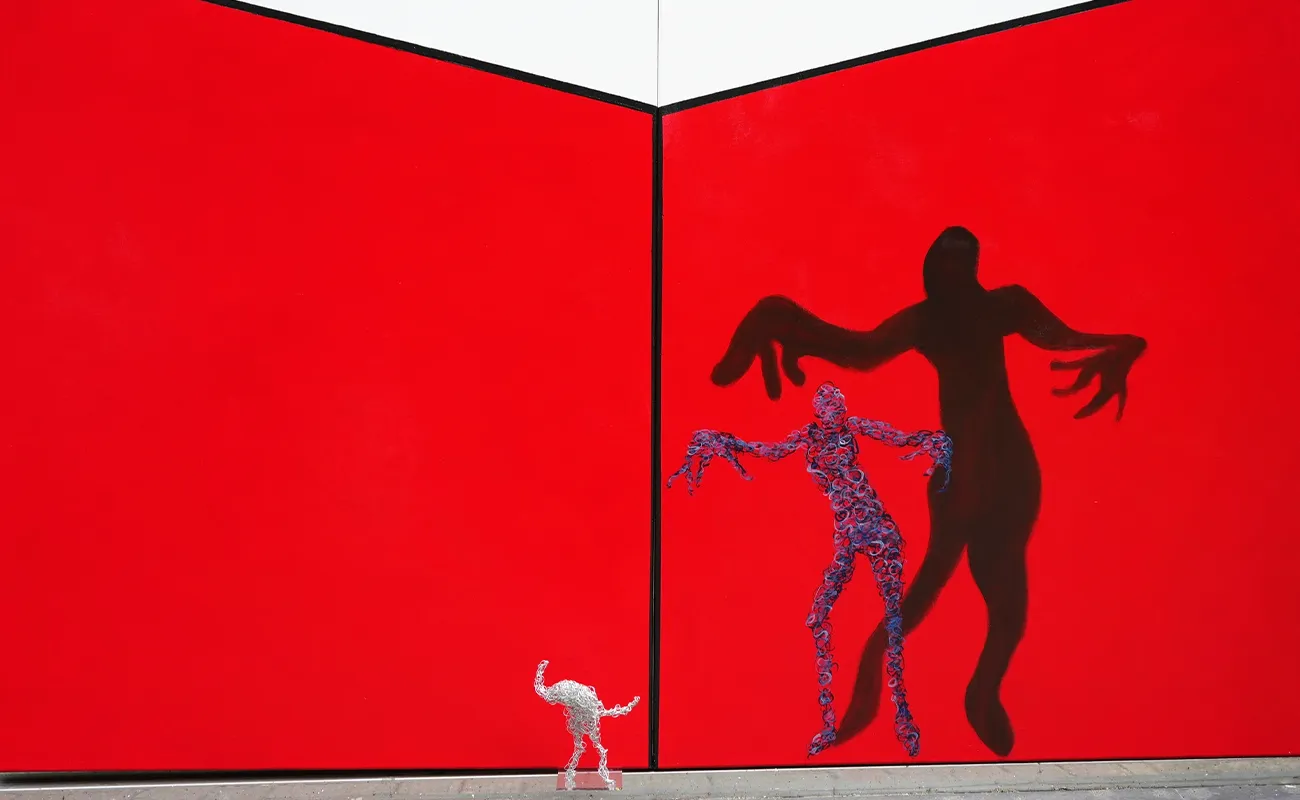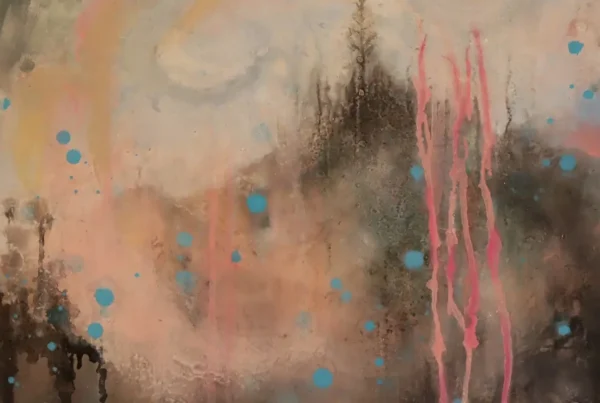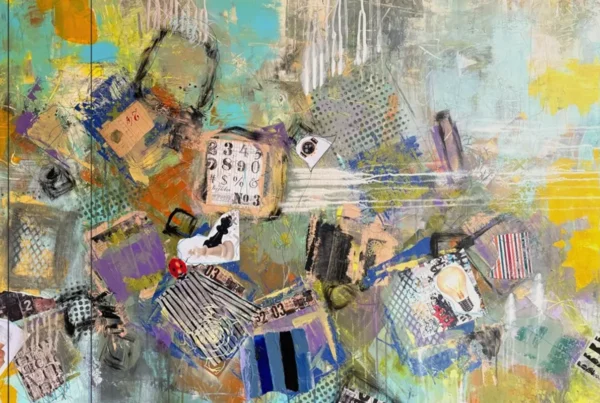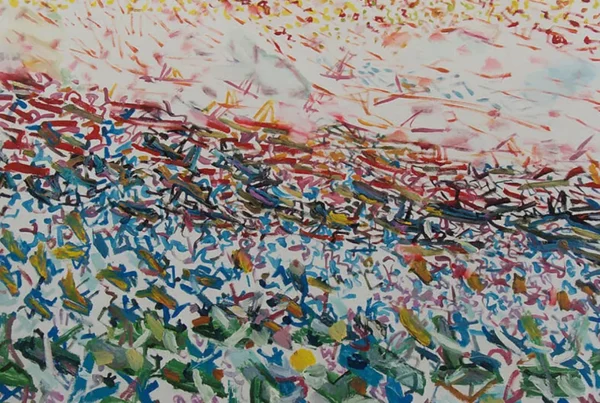“Art is not limited to the aesthetically pleasing. It should carry meanings. One may not appreciate my art, but he or she must resonate to my work or feel the energy in it.”
Art as Freedom and Defiance
Vivien Chan, an artist straddling both the UK and Hong Kong, has built her career on the bedrock of rebellion and passion. From an early age, she yearned to immerse herself in art, yet life circumstances often stood in her way. Rather than submitting to these limitations, Chan embraced a spirit of defiance, pushing back against conformity. This resistance to staying “in the pack,” as she describes, became her guiding principle, shaping her worldview and her approach to art. It was not until her daughters left for university that Chan truly found the freedom to pursue her long-suppressed artistic dreams.
Reclaiming her personal space and time, she immersed herself in the world of art, enrolling in classes at Atelier 47 in Hong Kong. This period of discovery marked the beginning of an intense artistic journey. At Atelier 47, Chan encountered a mentor who would become a pivotal figure in her development. Through his guidance, she cultivated a deep appreciation for the profound connection between the artist and her work. For Chan, art became more than a visual craft; it became a mirror of the human condition, offering an unflinching reflection of contemporary life.

Vivien Chan: The Magic of Creation
Chan believes passionately in the symbiotic relationship between artist and artwork. She speaks of a “magic” that exists in the creative process, where the artist draws inspiration from the work itself, and the work in turn evolves under the artist’s influence. This ongoing dialogue is central to her artistic philosophy. For her, the creative journey is a deeply personal, almost meditative experience—one where she feels fully present, devoid of distractions. In these moments, Chan channels her energy into creating art that is meant to provoke thought rather than simply please the eye.
Her art is imbued with conceptual depth, often challenging traditional notions of beauty and form. One of her most recent and celebrated works, titled Red-der, exemplifies this. By distilling a complex idea into a deceptively simple visual form, Chan seeks to confront viewers with the deeper, often unsettling aspects of human nature. She has always been drawn to themes that explore the inner self, particularly the darker sides of human existence, and how these interact with external forces. Her work may not be universally appreciated in a conventional sense, but she strives for a visceral connection, encouraging the audience to feel the energy and emotion that she pours into each piece.

Reimagining Mixed Media
Chan’s artistic style is notable for her audacious use of mixed media. While her base materials often include oil or acrylic, her approach is anything but conventional. She frequently incorporates found objects and tactile elements into her work, a technique that adds texture and depth. In earlier collections, she used barbed wire and broken mirrors alongside traditional paints, creating pieces that visually confront the viewer with stark contrasts between fragility and danger. This juxtaposition speaks to her ongoing interest in the tension between vulnerability and strength.
Her latest collection, Red-der, takes this exploration to new heights by blending two-dimensional painting with three-dimensional sculptural elements. Through the use of wire and acrylic lines, Chan constructs figures that appear to exist simultaneously in both planes. This bold fusion of mediums challenges the boundaries between painting and sculpture, creating a dynamic interaction that blurs the line between reality and representation. The collection represents her growing confidence as an artist, unafraid to experiment and push the limits of traditional art forms.

Vivien Chan: Capturing the Dark Side of the Human Experience
Vivien Chan’s work is characterized by bold, minimalist compositions that leave a lasting impression. Vivid red backgrounds dominate her canvases, serving as a powerful backdrop to the delicate, ethereal wire-like figures she meticulously creates. These fragile forms often interact with shadowy, almost ominous presences, evoking a palpable sense of tension. This stark contrast becomes a visual metaphor for the internal struggles that define much of human existence—conflicts between identity, control, and the darker aspects of the psyche.
By introducing sculptural elements into her paintings, Chan adds a physicality that heightens the emotional impact of her work. Her wire figures, though delicate, seem to challenge the imposing shadows, embodying the vulnerability and resilience of the human spirit. This interplay between lightness and darkness speaks to themes of isolation, inner conflict, and existential questioning. For Chan, the darker side of humanity is not something to be hidden; rather, it is a vital element of the human experience that deserves to be explored and expressed through art.
With exhibitions in London, Tokyo, and recent showcases in New York and Paris, Chan’s work is steadily gaining international recognition. Her selection for Le Salon D’Automne in Paris represents a significant milestone in her career. Yet, she continues to set her sights higher, with plans for a solo exhibition that will explore a single concept through a range of artistic forms, including painting, sculpture, and installation. For Chan, art is more than an aesthetic endeavor—it is a powerful tool for examining the complexities of the human experience, challenging viewers to confront the uncomfortable and engage with the unseen forces that shape our lives.






